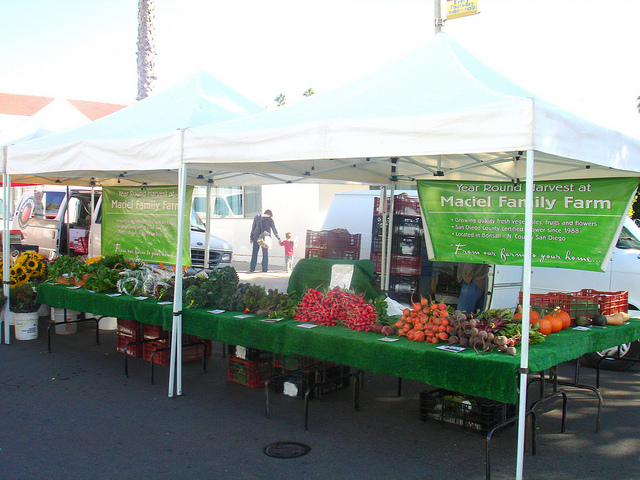If you’ve been dutifully choosing locally grown and processed foods, you’re part of a big (and valuable) market niche. According to the USDA, the last ten years have seen a surge in the number of farms selling directly and the dollar sales they make to local markets.
Some critics say that locally grown foods don’t solve global warming as much as we’ve heard from the enthusiasts – but hey, there are other issues that local food economies address: keeping family farms alive, providing alternatives to industrial/corporate food, creating sources for organic and unusual foods, and offering meaningful work.
About this last point, Tom Philpott, writing about the USDA report for Mother Jones, ferreted out this interesting fact: “Fruit and vegetable farms that sell into local markets employ 13 full-time employees per every $1 million in sales, versus just 3 employees for their counterparts that sell into global commodity markets. In other words, a dollar you spend at the farmers market supports four times as many workers as a dollar spent at the supermarket.”
Good news in this era of unemployment.
BUT the average age of farmers is increasing. Who will feed us when they retire?
Answer: A new generation of farmers! Might you be one of them? You’d be facing some challenges – finding the land, accessing capital and credit, mastering the complexities of soil, sun, and weather. Having made humble attempts to grow food, I’ve gained great respect for those who accept the challenge.

- credit JoelnSouthernCA on flickr
What if this career isn’t for you? Well, you can support your local farmers by buying at farmers’ markets, joining a CSA, or investigating Slow Money, which brings farmers and entrepreneurs together with investors. You could encourage military veterans you know to investigate this opportunity. As I’ve reported before, there are organizations and resources to help them make the transition.
